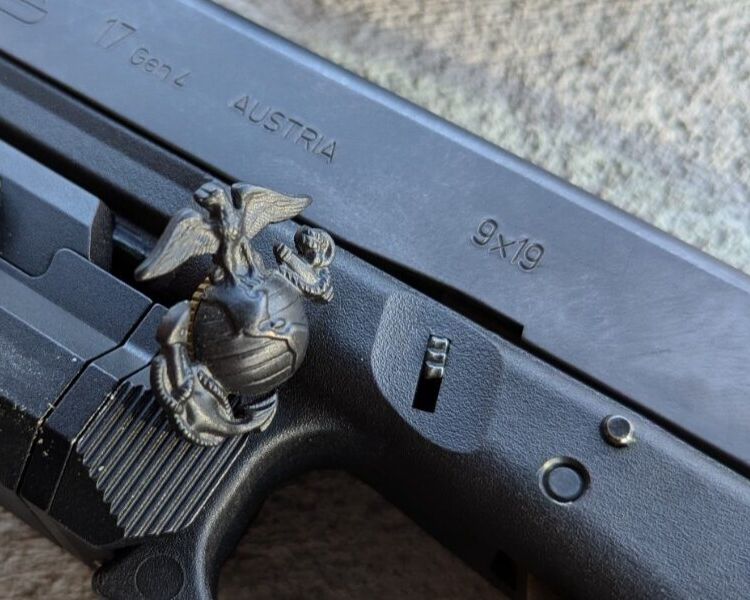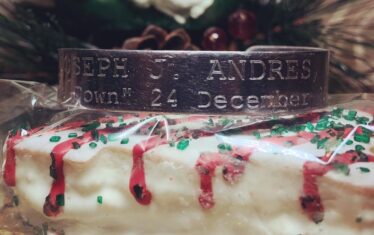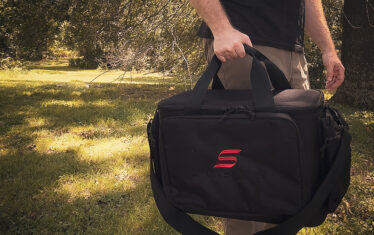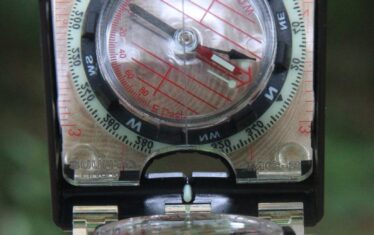I spent five years in the Marine Corps as a machine gunner. As a machine gunner, I was issued an M9 as a sidearm to my M240, which meant I had to qualify for the M9 every year.
I always thought the M9 qualification was the most boring, simple, and far from combat qualification I’d ever shot. Luckily, the Marine Corps saw it the same way and, for the first time in decades, created a new, combat-oriented pistol course. The CPP, or Combat Pistol Program, aims to embrace a more combative structure.
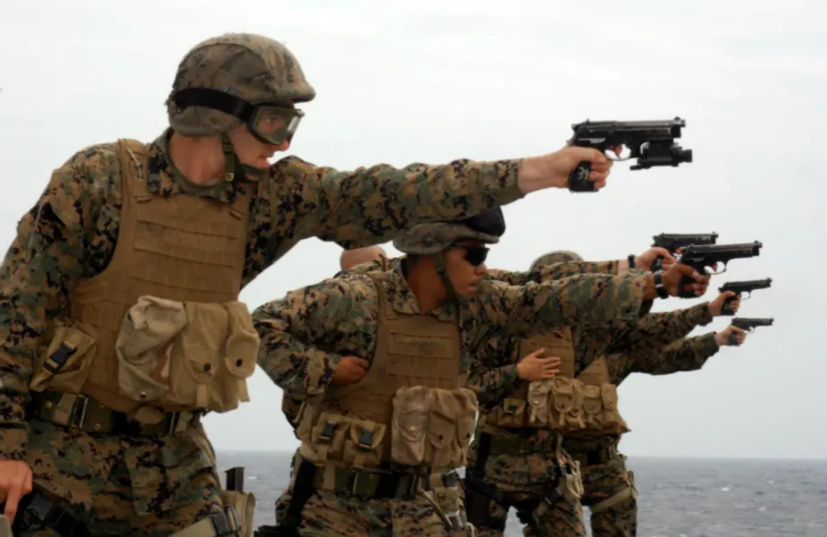
The Marine Corps, as a whole, is usually slow to change. However, in recent years, it has been making sweeping changes to its training and development process and embracing a more combative structure of qualifications.
The CPP came across my radar, and I knew I had to give it a try. The course seems fairly simple and most certainly improved the previous qualification.
Is it worth a shoot? Let’s find out.
What You Need For the CPP
The CPP requires a mere 40 rounds of ammo. I have always liked training evolutions that I can complete with a single box of ammo. You have ten extra rounds to make up shots and practice in areas you might not excel in.
The Marine Corps currently issues Safariland holsters for M18 pistols. I didn’t have an M18, but I most assuredly had a Safariland Level 3 duty rig. I went with the 6304RDS, which fits my optic- and light-equipped Glock 17. The Marine Corps isn’t fielding optics on its guns, but I most certainly am.
I think any standard duty-sized pistol works, but you could also shoot it concealed with a Schema and P365, and you’ll have a great time.
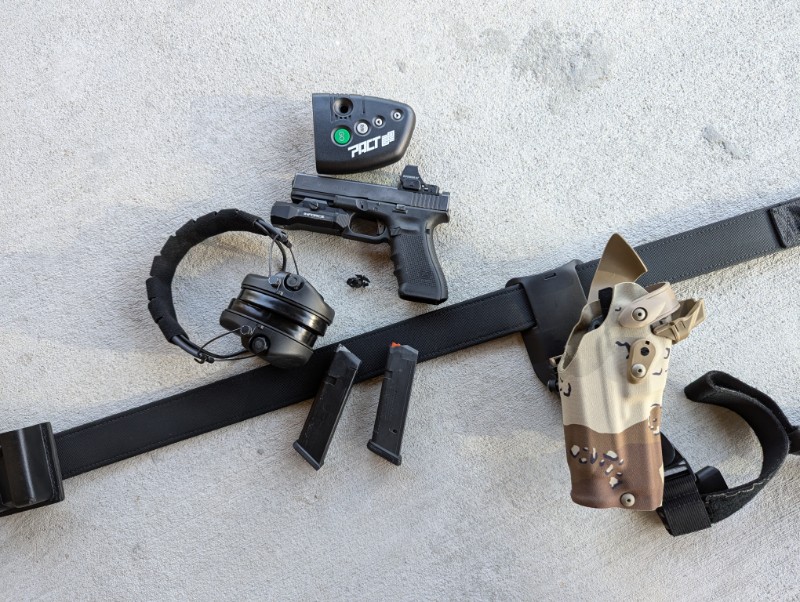
We’ll also need at least two magazines and a spare magazine pouch to store your reload. I used a Bianchi Duty belt and a Safariland 79 Slimline Open Top Double Magazine Pouch. We’ll also need a shot timer.
The Marine Corps uses its target for the qual, and to properly score, you’d need to do the same thing. Marines shoot for badges and higher quals, but we can get away with a standard silhouette. If you want the USMC target, do a quick Google search for the US Marine Corps Qualification Program Pistol Target, and you’ll find it.
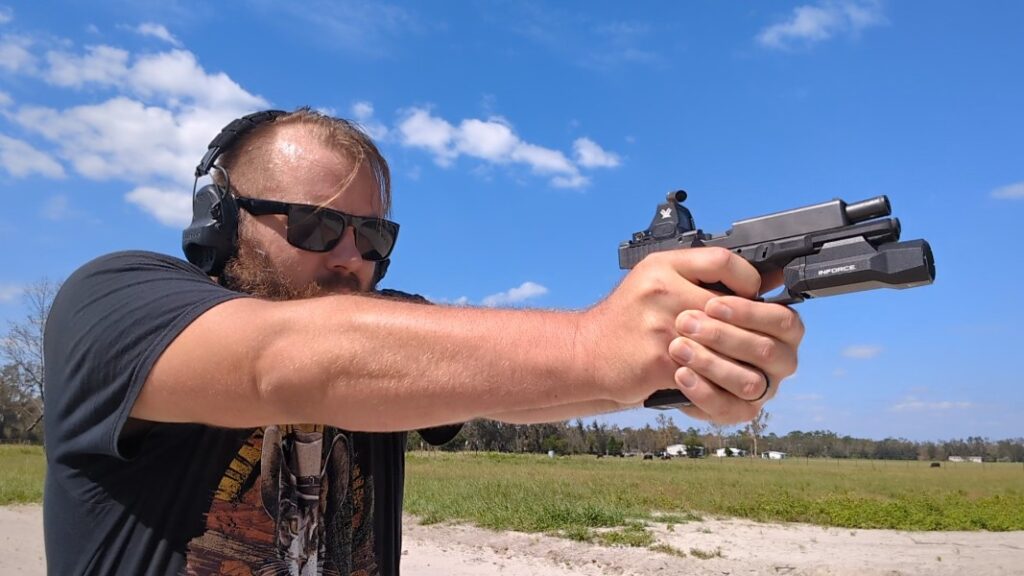
We need to shoot as close as seven yards to the target and as far as 25 yards. Now that we are geared up, let’s examine the course of fire.
Shooting the CPP
The CPP is divided into three stages. Shoot Stage 1 at the seven-yard line, Stage 2 at the fifteen-yard line, and Stage 3 at the 25-yard line.
Stages 1 and 2 are made up of multiple phases. Between each phase, you’re dictated on how many rounds need to be in the gun and how many rounds need to be in the spare magazine. Each stage flows into the next.
Stage 1: 7 Yards
We’ll start stage one with one magazine loaded with 14 rounds and one magazine loaded with nine rounds. The 14-round magazine will go into your gun, and the nine-round magazine will go into your magazine pouch.
Phase 1: Controlled Pairs From Holster
Start with your gun holstered and all retention devices in place. You will draw and fire a controlled pair at the command, or in my case, the irritating beep. A controlled pair is two shots fired with two sight pictures. It differs from a double tap, which is two shots fired for one sight picture.
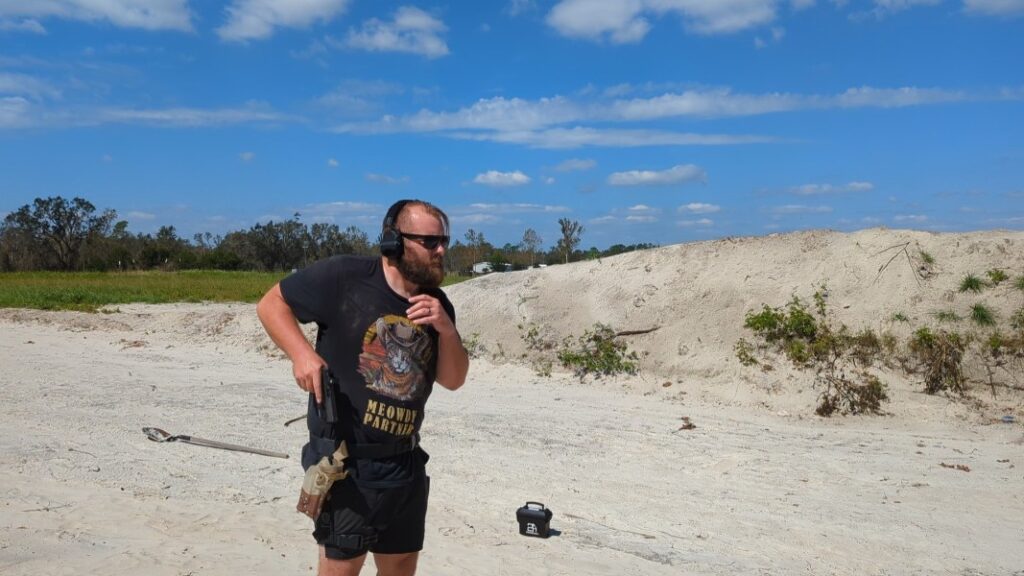
You’ll do this drill three times for a total of six rounds. You have five seconds for each controlled pair. My average for this drill was 1.89 seconds.
Phase 2: Failure To Stop From Holster
Start with your gun holstered and retention devices in place. You’ll draw and fire two rapid shots to the chest at the signal to go. You’ll then take a well-aimed headshot.
The classic failure-to-stop handgun drill attempts to make up for the poor handgun ballistics by implementing multiple shots to stop the threat zones.
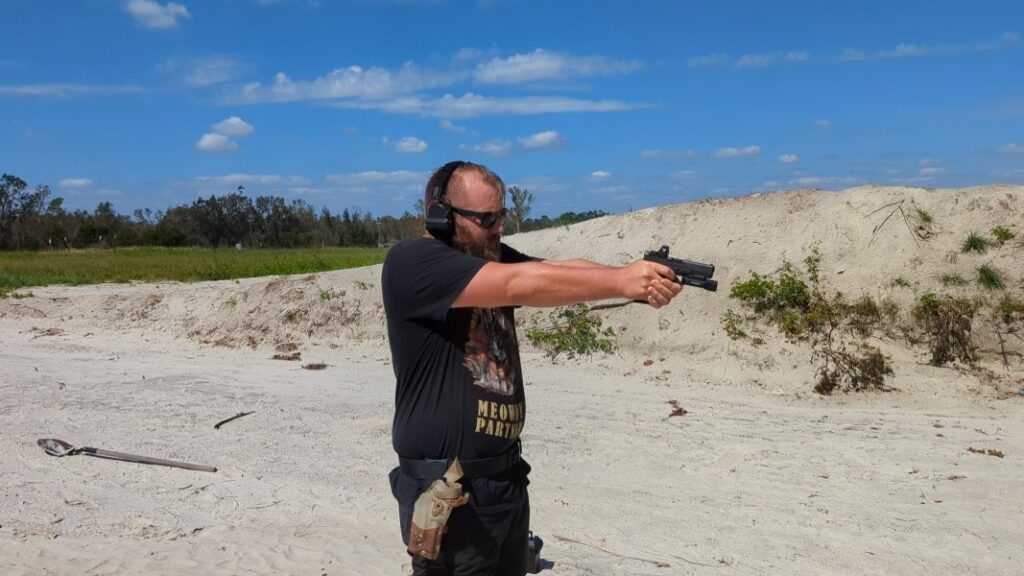
You’ll conduct this CPP drill twice for a total of six rounds fired. You have seven seconds for each individual drill. I averaged less than 2.5 seconds.
Phase 3: Speed Reload From Holster
At this point, you’ll have only two rounds left in your weapon.
Start with your gun holstered, and retention devices in play. At the go signal draw and fire two rounds. With the gun now empty you’ll conduct a speed reload. A speed reload means you drop the magazine and reload as quickly as possible.

Once reloaded, you’ll fire two more rounds. You’ll conduct this drill once, and you have nine seconds. It took me 4.5 seconds.
This ends phase one.
Stage 2: 15 Yards
So we’ve backed up to the 15-yard line before we start shooting we need to reload your now empty magazine with seven rounds. Place it in your magazine pouch.
Phase 1: Controlled Pairs From Holster
Are we starting to feel a little deja vue? We are essentially repeating Phase 1 of the CPP stage one. We start holstered and at the beep draw and fire a controlled pair into the torso of the target.
This time, we’ll shoot the drill six times. We have six seconds to complete the drills. I had an average of two seconds per drill.

The math says that six controlled pairs is a total of 12 rounds, and you only have seven rounds in your magazine. After the third controlled pair, you’ll conduct a tactical reload.
A tactical reload means retaining the magazine in the gun while reloading with a fresh magazine. The retained magazine can go in a dump pouch, a pocket, or back into the magazine pouch.
After we shoot our controlled pair drills, we need to refill our empty magazine with ten rounds.
Phase 2: Speed Reload From Holster
With ten rounds in the pouch and two in the gun, we are conducting another speed reload from the holster. At the beep, draw and fire two rounds to the torso and immediately conduct a speed reload. With the gun reloaded, fire two more rounds. We have 12 seconds to conduct this drill.
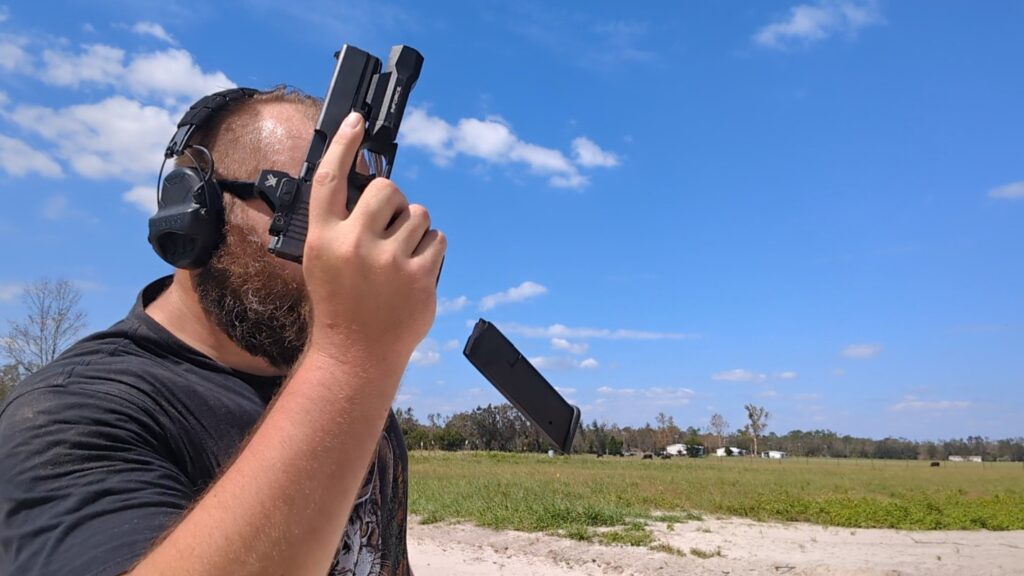
This ends Stage 2.
Stage 3: 25 Yards
Oh boy, that target starts to look mighty small at 25 yards. Luckily, you don’t have to worry about the holster anymore. You’ll start this phase of the CPP in a tactical carry, which is a high-ready position.
Phase 1: Single Action Slow Fire
From 25 yards, you’ll assume a high-ready position. At the go signal, you’ll fire a single well-aimed shot. You have seven seconds per rep, so you can take your time. You don’t get bonus points for finishing the course faster than slower. You’ll repeat this simple drill eight times, total.
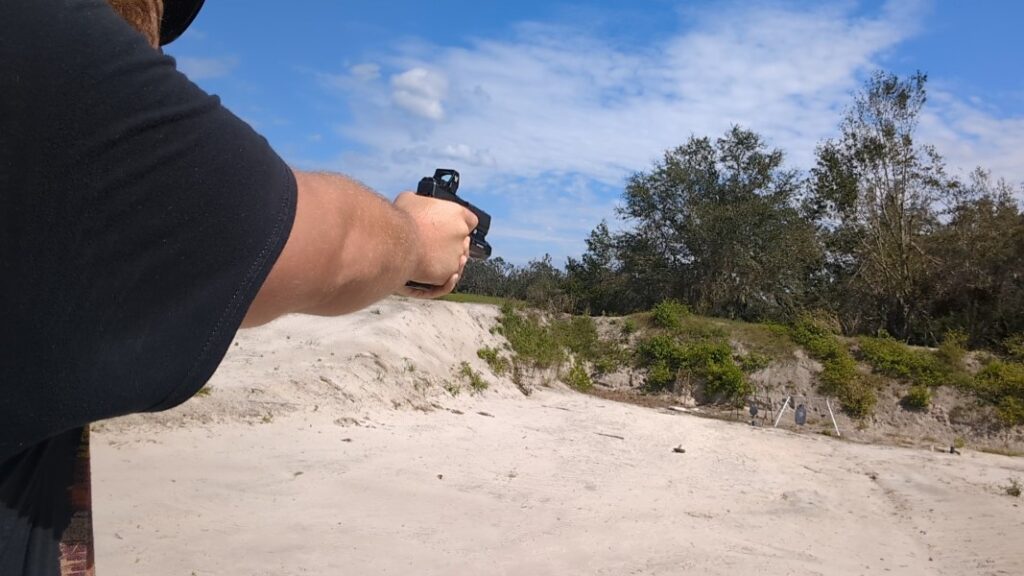
That’s it, unload, show clear, and holster.
My Thoughts On the Cpp
While the Combat Pistol Program is an improvement on the old USMC course, it’s still very simple and very easy. I do understand why the USMC uses this qual. Handguns are far from common on the battlefield. They are used about as often as bayonets! You just need the basic skills to pass.
The USMC pistol qual is a great place to start for new handgun shooters. It does require some practice and skills if we are starting from the very beginning, but this is a great training piece for beginners and new shooters. It has time and accuracy standards and requires the most basic handgun skills. It’s not intimidating or dangerous, and the times are quite generous.
Give the CPP a shot and see if you can shoot like a Marine.





